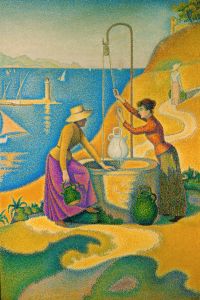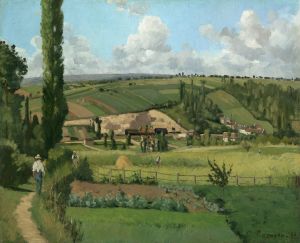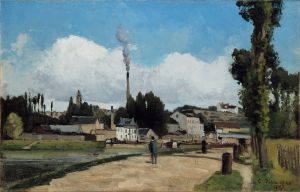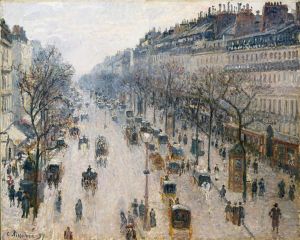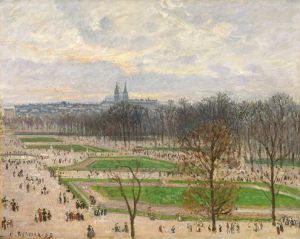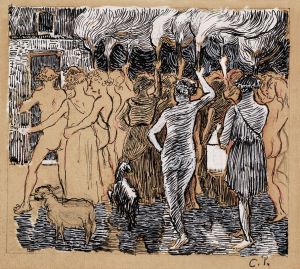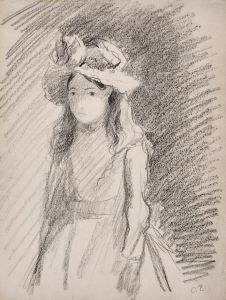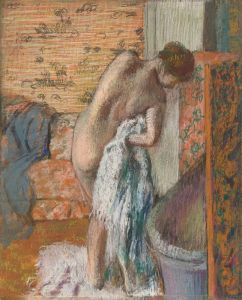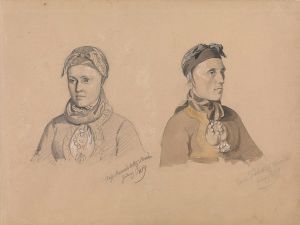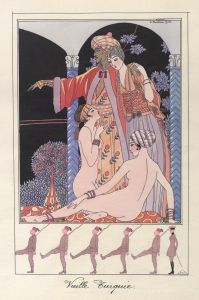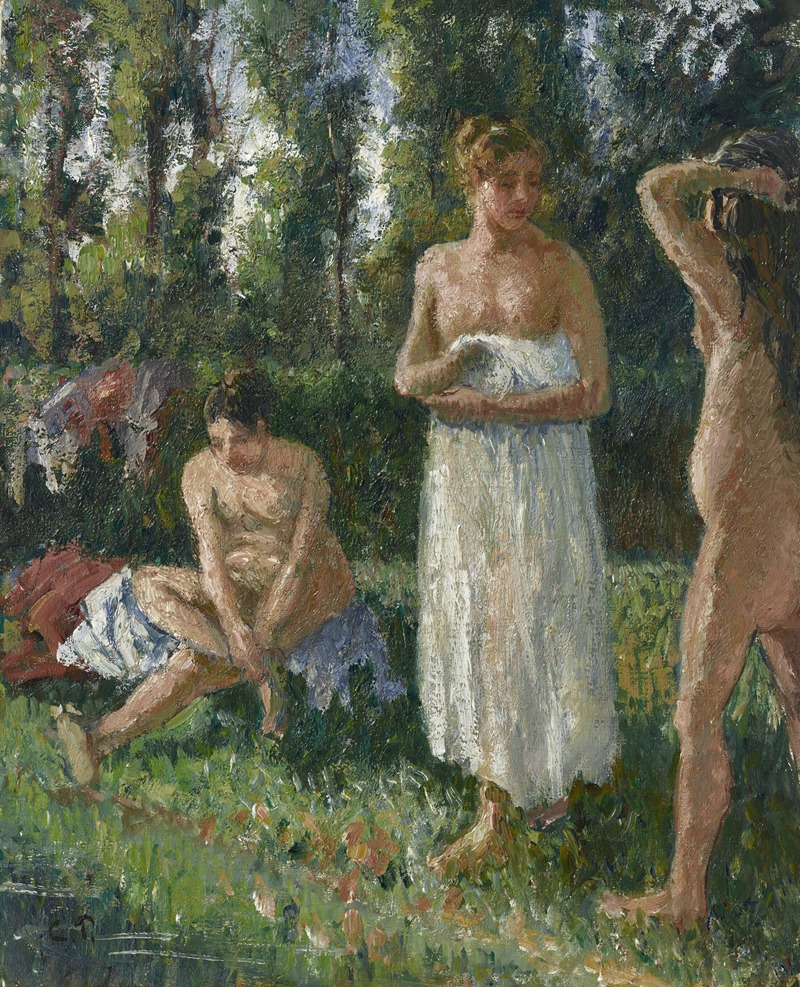
Baigneuses
A hand-painted replica of Camille Pissarro’s masterpiece Baigneuses, meticulously crafted by professional artists to capture the true essence of the original. Each piece is created with museum-quality canvas and rare mineral pigments, carefully painted by experienced artists with delicate brushstrokes and rich, layered colors to perfectly recreate the texture of the original artwork. Unlike machine-printed reproductions, this hand-painted version brings the painting to life, infused with the artist’s emotions and skill in every stroke. Whether for personal collection or home decoration, it instantly elevates the artistic atmosphere of any space.
Camille Pissarro, a pivotal figure in the Impressionist movement, created the painting "Baigneuses" (translated as "Bathers") during a period when he was deeply engaged with exploring themes of rural life and nature. Pissarro, born in 1830 on the island of St. Thomas, was a Danish-French painter who played a significant role in the development of Impressionism and Post-Impressionism. His work is characterized by its focus on light and atmosphere, as well as his commitment to painting en plein air, or outdoors, to capture the natural world in its true form.
"Baigneuses" is one of Pissarro's works that exemplifies his interest in depicting everyday scenes with a sense of realism and immediacy. The painting portrays a group of women bathing in a natural setting, a subject that aligns with the Impressionist fascination with leisure activities and the human figure in nature. This theme was popular among Impressionist artists, who often sought to capture the transient effects of light and the spontaneity of modern life.
Pissarro's technique in "Baigneuses" reflects his mastery of color and brushwork, which he used to convey the shimmering effects of light on water and skin. His palette typically included soft, muted tones that harmonized with the natural environment, and his brushstrokes were loose and fluid, allowing him to convey movement and the play of light with great sensitivity. This approach was instrumental in creating a sense of immediacy and intimacy in his work, drawing the viewer into the scene.
Throughout his career, Pissarro was known for his collaborative spirit and his willingness to experiment with different styles and techniques. He was a mentor to several younger artists, including Paul Cézanne and Paul Gauguin, and he maintained close relationships with other leading figures of the Impressionist movement, such as Claude Monet and Edgar Degas. Pissarro's openness to new ideas and his commitment to artistic innovation were key factors in his enduring influence on the art world.
"Baigneuses" is a testament to Pissarro's ability to capture the beauty and simplicity of rural life, a theme that resonated deeply with him throughout his career. His work often depicted the lives of peasants and the rural landscape, reflecting his belief in the dignity and value of everyday life. This perspective was somewhat radical at the time, as it challenged the traditional hierarchy of subjects in art, which typically prioritized historical and mythological themes over scenes of ordinary life.
Pissarro's contribution to the Impressionist movement and his impact on subsequent generations of artists cannot be overstated. His dedication to capturing the essence of the natural world and his innovative approach to painting have left a lasting legacy in the history of art. "Baigneuses," like many of his works, continues to be celebrated for its beauty, technical skill, and the insight it provides into the life and vision of one of Impressionism's most important figures.






